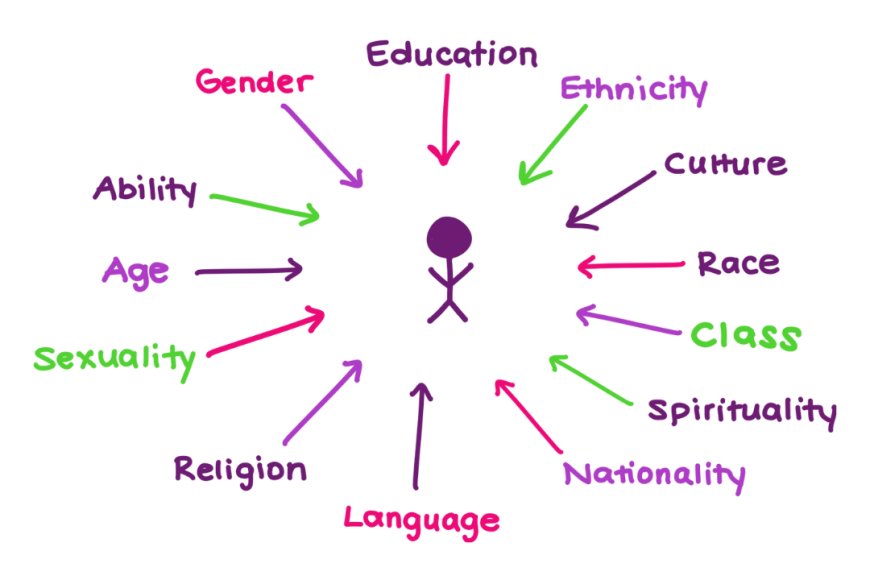What Is Intersectionality and Why Does It Matter in Sexuality?
Explore the concept of intersectionality and understand its critical role in the study and experience of human sexuality. Learn how overlapping identities shape sexual experiences and challenges.

What Is Intersectionality and Why Does It Matter in Sexuality?
Intersectionality is a framework for understanding how multiple social identities—such as race, gender, class, sexuality, disability, and more—interact and overlap to shape individual experiences and systemic inequalities. Coined by scholar Kimberlé Crenshaw in 1989, intersectionality highlights that people do not experience discrimination or privilege in a singular or isolated way, but rather through a complex matrix of identities and social factors.
The Origins and Definition of Intersectionality
The term “intersectionality” was introduced by Kimberlé Crenshaw, a legal scholar who studied how Black women faced overlapping forms of discrimination both as women and as Black individuals. Intersectionality broadens traditional understandings of oppression by emphasizing that identities are interconnected and cannot be examined separately without losing important context.
Intersectionality in the Context of Sexuality
When applied to sexuality, intersectionality helps us recognize that sexual experiences and challenges are deeply influenced by other aspects of identity. For example, a queer person of color may face different social barriers than a white queer person due to the combined effects of racism and homophobia. Similarly, disability, socioeconomic status, religion, and cultural background can all influence how people understand and express their sexuality.
Why Intersectionality Matters in Sexual Health and Rights
Sexual health and rights are not experienced uniformly across all communities. Intersectional approaches reveal how marginalized groups often encounter unique barriers to accessing sexual healthcare, education, and support. These disparities may result from systemic racism, transphobia, ableism, or economic inequality, among others. Addressing sexual health through an intersectional lens allows policymakers and healthcare providers to create more inclusive and effective programs.
Impact on Sexual Identity and Expression
Intersectionality also influences how individuals form and express their sexual identities. Cultural norms and family expectations, combined with race, religion, and gender, can shape personal acceptance and community belonging. For example, LGBTQ+ individuals from conservative religious backgrounds might navigate their sexuality differently than those from secular or affirming communities.
Challenges Faced by Intersectional Identities
Individuals who inhabit multiple marginalized identities often face compounded discrimination. For example, transgender women of color experience disproportionately high rates of violence, poverty, and healthcare discrimination. Intersectionality draws attention to these overlapping vulnerabilities and encourages solidarity and targeted advocacy to address them.
Intersectionality and Sexual Education
Sexual education that incorporates intersectionality is more inclusive and relevant. It acknowledges that not all students share the same backgrounds or face the same challenges. By addressing diversity in sexual orientation, gender identity, cultural values, and accessibility needs, educators can create safe spaces where all students feel represented and empowered.
Intersectionality in Research and Activism
Researchers and activists who adopt intersectional frameworks are better equipped to analyze and dismantle systemic inequalities within sexuality studies and LGBTQ+ advocacy. Intersectionality encourages collaboration across movements and highlights the importance of amplifying voices from the most marginalized communities.
How You Can Apply Intersectionality in Everyday Life
Understanding intersectionality is not only academic but practical. In everyday interactions, recognizing the diverse experiences shaped by overlapping identities can foster empathy and reduce prejudice. Whether supporting friends, participating in activism, or engaging in discussions about sexuality, applying an intersectional mindset promotes inclusivity and respect.
Conclusion
Intersectionality is a powerful tool to understand the complexity of human sexuality and the ways various identities influence experiences and challenges. By acknowledging and addressing these interconnected factors, we can build a more inclusive, just, and affirming society where everyone’s sexuality is respected and celebrated.











